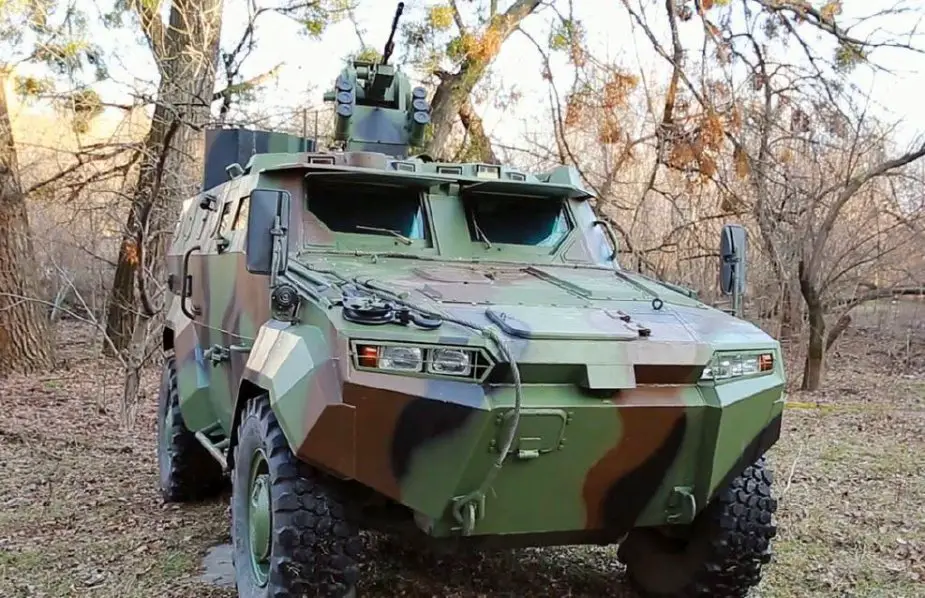The war waged by the Ukrainian army against the Russian-backed separatists is generating more and more indigenous vehicles, among other armaments. The Triton-01 unveiled at a Kyiv arms show in 2016 is one of them, as published by 21st Century Asian Arms Race. Ukraine’s military and law enforcement agencies have yet to adopt the Triton-01 but it’s now approved for export.

Triton-01 (Picture source Via Leninska Kuznya)
Manufactured by a shipyard (owned by former President Poroshenko) that launched a non-maritime production line to meet the needs of the country’s armed forces, the Triton-01 boasted a welded steel hull and extensive weaponry. It was even possible for it to support a remote-controlled turret that combined a 12.7mm machine gun and an automatic grenade launcher. A variant of the Triton-01 had two propellers behind the rear axle, allowing the vehicle to swim across rivers and streams at 10 km/h.
The Triton-01 isn’t a mine-resistant (MRAP) truck although its armor level withstands lethal fragments and bulletproof windows protect the occupants inside the cab. Its NATO-standard protection level is speculated to be at STANAG II. According to its manufacturer, the Triton-01 monocoque shell was designed with three compartments (engine, combat, and passenger). The chassis, in particular, is unique since it’s enclosed within the hull and described as a “4×4 axle configuration” supporting run-flat tires and the [Allison] automatic transmission system.
The engine is a turbo diesel Volvo Penta TAD620VE producing up to 211 horsepower. When configured as an amphibious transport, the front of the vehicle was designed to carry a lever hoist, also known as a trim vane, aiding its mobility in water crossings. A winch holding a coiled steel towing cable is located on the side of the bonnet, which is atypical since these are usually installed beneath the grille, and two hooks are located below the headlights for pulling excessive cargoes.
The Triton-01’s combat optimization is impressive for a vehicle weighing a mere eight tons fully loaded. Each of the windshields on the cab has Soviet-style folding steel windows to stop direct hits. When the vehicle is buttoned down, the driver and co-driver have viewing slits on their roof hatches. A control panel for the weapon station on the roof allows the co-driver to use the primary and secondary armaments at their disposal. It’s also possible for a retractable mast supporting a thermal camera, together with electronic warfare equipment, to be installed on the Triton-01’s roof.
Its double cab layout allows seating for three additional passengers in a row with seating for six passengers at the back who enter via a ramp. Firing ports and two roof hatches allow the passengers to fight from inside the vehicle. The Triton-01’s manufacturer claims it can operate in varying climates, from subzero temperatures to unbearable heat. (In other words, Northern Europe and the Middle East.) Devoid of the sleek contours common among today’s military trucks, the Triton-01’s appeal is serving as a replacement for antiquated BTR-series APCs and BRDM armored scout cars.















